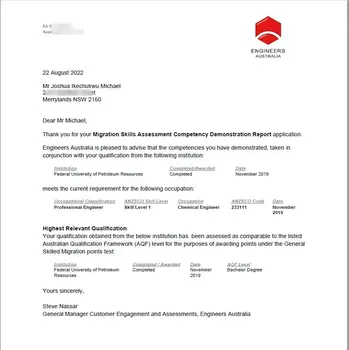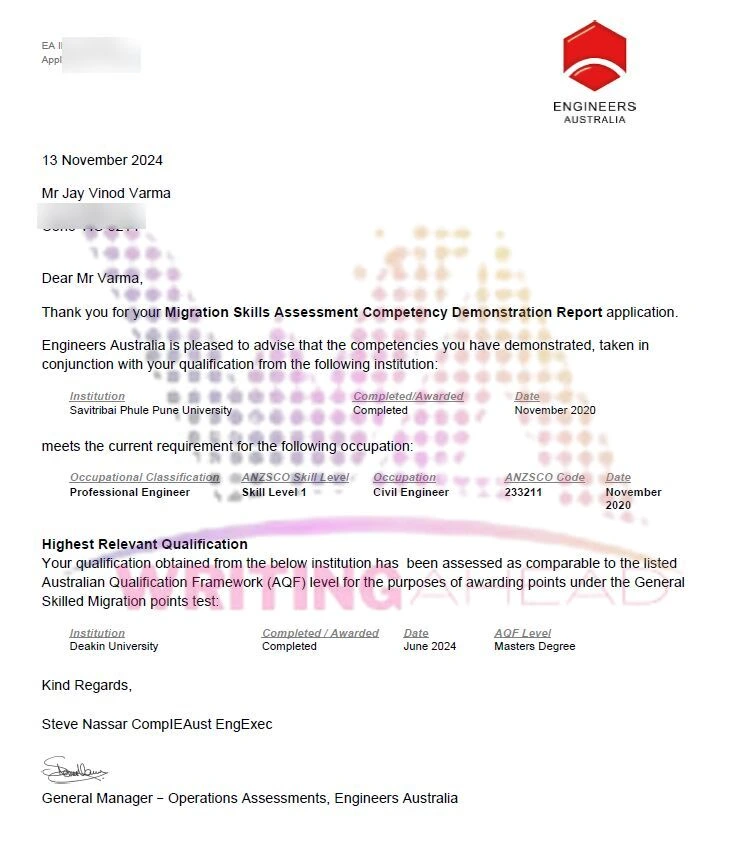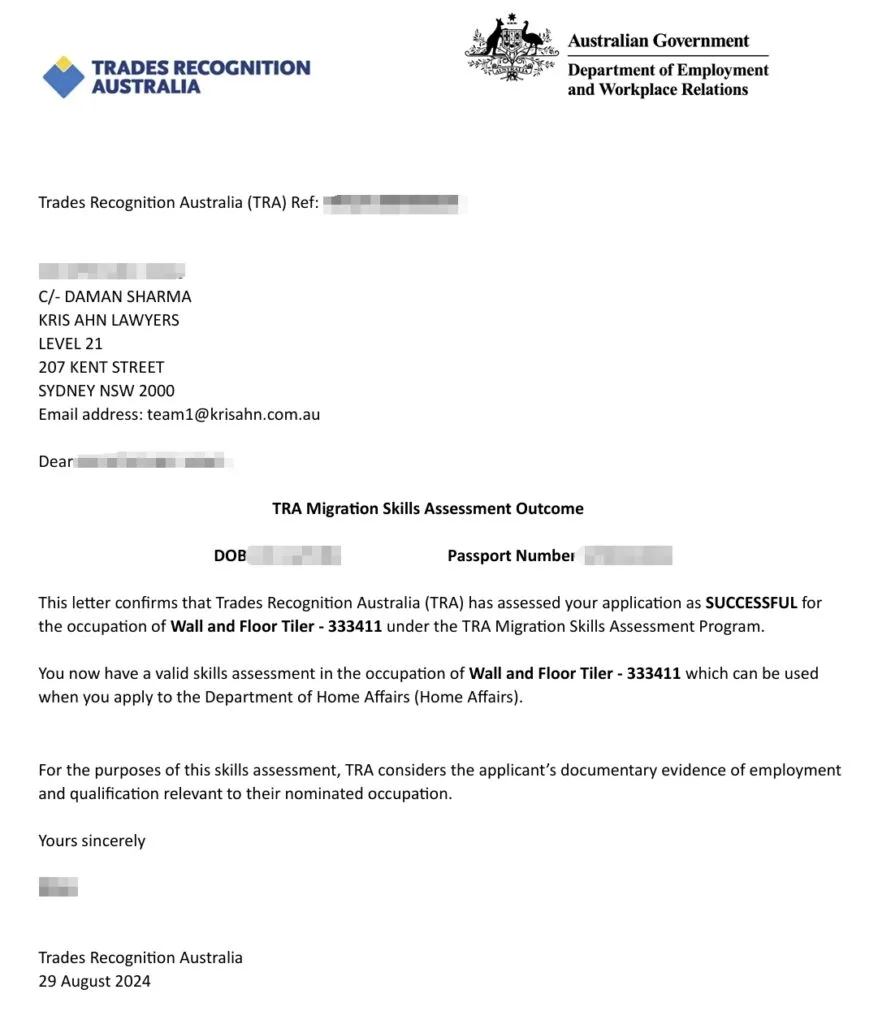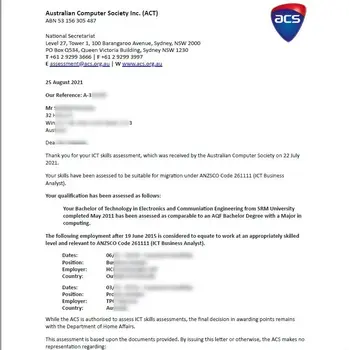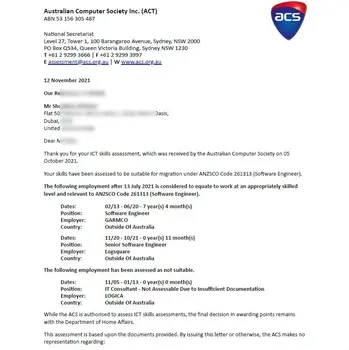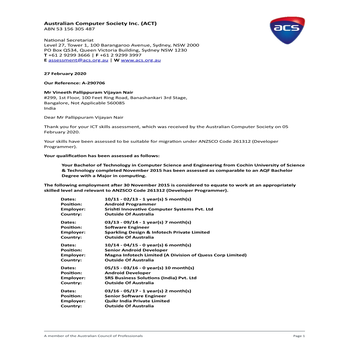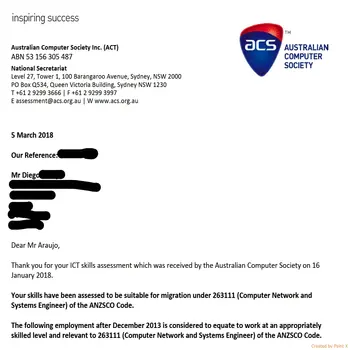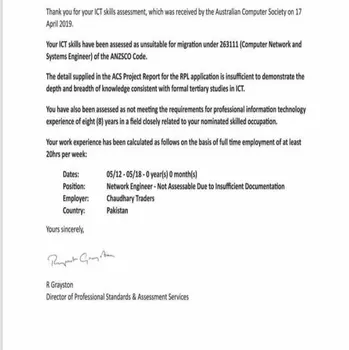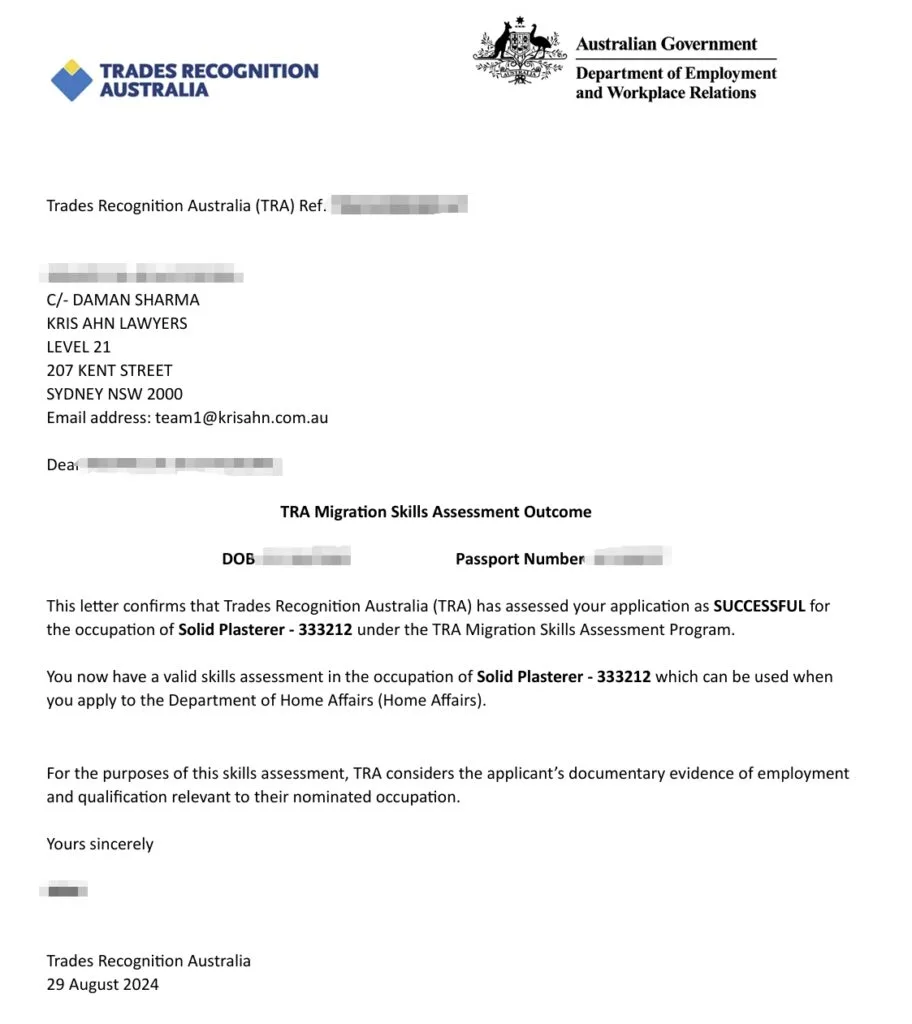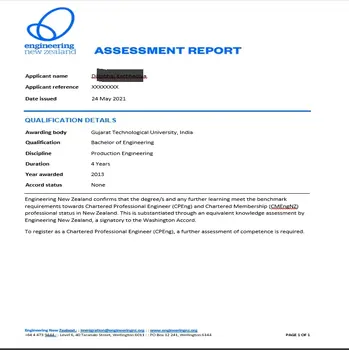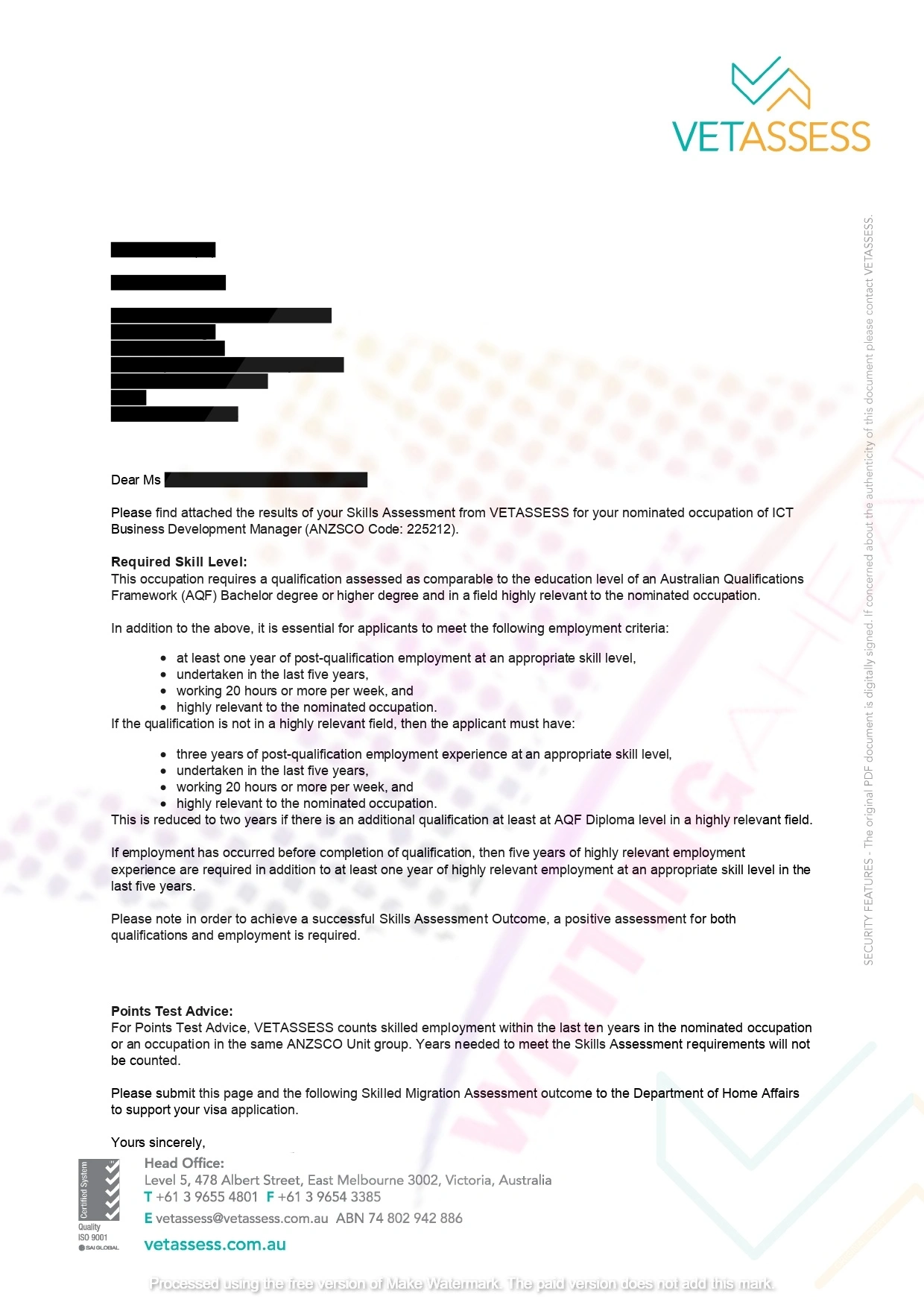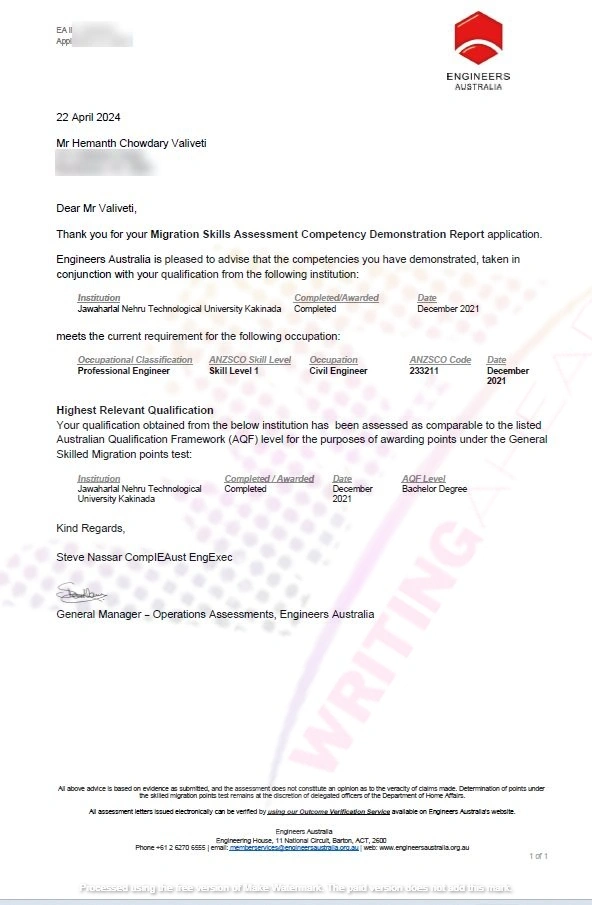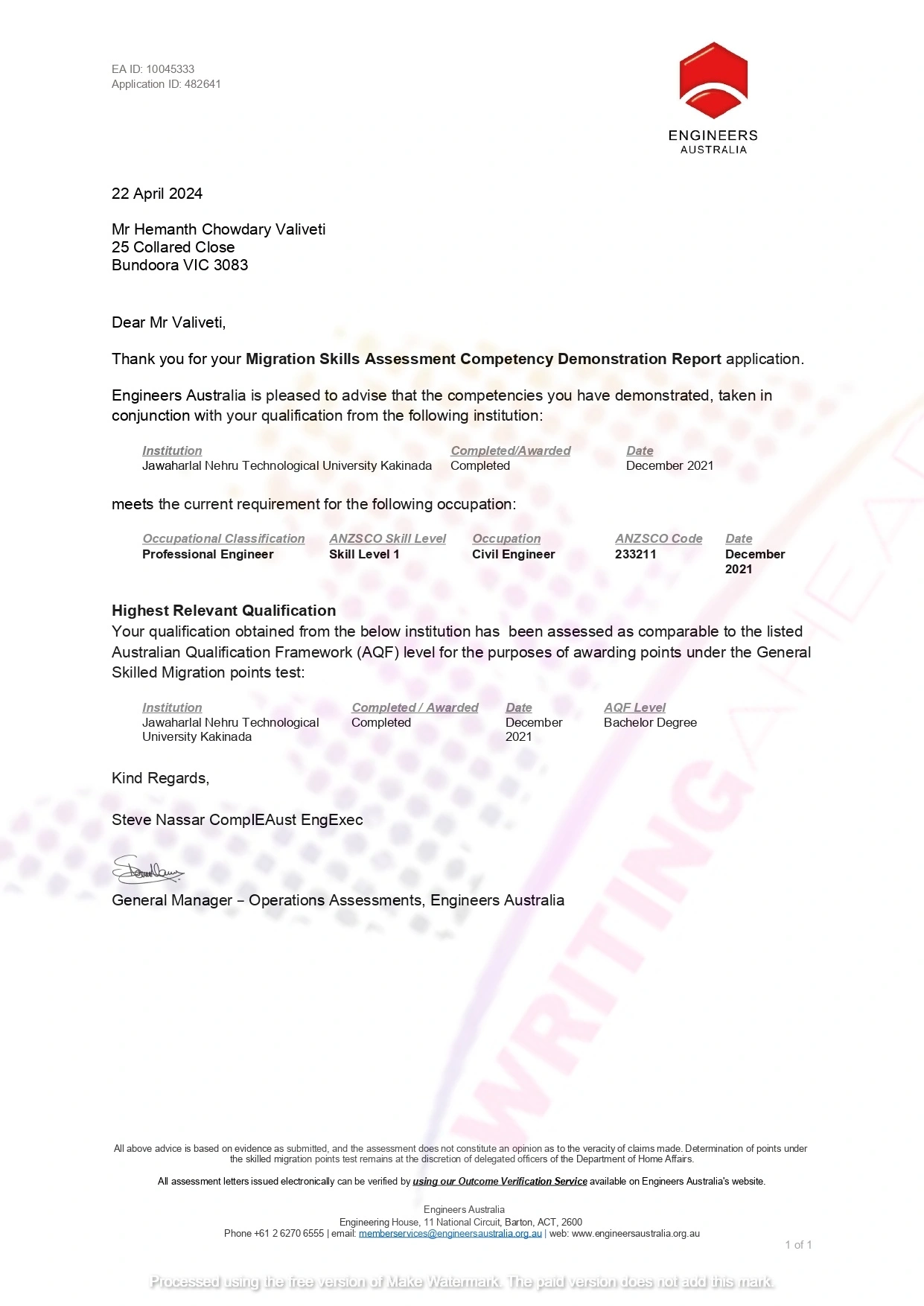What Is CPD Writing for Engineers Australia?
A CPD (Continuing Professional Development) statement for Engineers Australia is a document that outlines an engineer's ongoing learning and professional development activities. It is a crucial component of the Competency Demonstration Report (CDR) submission for engineers seeking migration to Australia. The CPD statement provides evidence of an engineer's commitment to staying current and enhancing their skills in the engineering field.
Key points about CPD include for Engineers Australia
- Purpose: The CPD statement demonstrates that the engineer has actively engaged in continuous learning and development to maintain and enhance their professional competence.
- Content: It includes details about relevant activities such as workshops, courses, conferences, seminars, self-directed learning, and any other forms of professional development undertaken by the engineer.
- Timeframe: Engineers Australia typically requires CPD records for the last three years, showing a consistent effort towards professional development.
- Reflection: Engineers may be required to include a reflective component, discussing how the CPD activities have contributed to their professional growth and competency.
- Alignment with Competencies: The CPD statement should align with the core competency areas outlined by Engineers Australia, reinforcing the engineer's commitment to these standards.
- Quantity and Quality: Both the quantity and quality of CPD activities matter. Engineers are encouraged to participate in a variety of activities and focus on those directly relevant to their engineering discipline.
- Authenticity: Like other components of the CDR, the CPD statement should be genuine and accurately reflect the engineer's efforts in professional development.
The CPD statement is a comprehensive record of an engineer's continuous professional development, showcasing their commitment to staying current and enhancing their skills. It plays a significant role in demonstrating the engineer's eligibility for skilled migration to Australia through the CDR process.
Why CPD Report Important For You?
A CPD report is important for engineers, especially when applying for migration to countries like Australia, where it is a crucial component of the Competency Demonstration Report (CDR).
Here are reasons why the CPD report is important:
| Demonstrates Commitment |
Shows dedication to ongoing learning in the engineering field. |
| Aligns with Competency Standards |
Links professional development to industry competency standards. |
| Reflects Professional Growth |
Articulates how learning activities contribute to personal and professional development. |
| Ensures Currency of Knowledge |
Validates the engineer's awareness of and adaptation to industry advancements. |
| Strengthens CDR Submission |
Adds credibility and completeness to the Competency Demonstration Report (CDR). |
| Meets Migration Requirements |
Mandatory for engineers applying for migration, especially to countries like Australia. |
| Enhances Professional Reputation |
Demonstrates a proactive approach to staying at the forefront of the engineering field. |
| Contributes to Industry Standards |
Active participation in CPD activities contributes to improving industry standards. |
| Provides a Learning Roadmap |
Serves as a record guiding future professional development plans. |
| Supports Lifelong Learning |
Emphasizes dedication to continuous learning throughout an engineer's career. |
The CPD report is not just a compliance document; it's a testament to an engineer's ongoing commitment to excellence and growth in their field. It is a vital component that contributes significantly to the overall success of the CDR submission.
Get professional CPD writing services from WritingAhead for a promising future. 💯 Approval Assurance Contact us today.
Common Mistakes To Avoid When Racking Up CPD Points
Accumulating Continuing Professional Development (CPD) points is crucial for professionals to stay current and enhance their skills. However, certain common mistakes can hinder the effectiveness of the CPD process.
Common Mistakes Made by Students When Drafting CPD Reports
Here are some mistakes to avoid:
- Procrastination:
- Mistake: Delaying CPD activities until the last minute.
- Impact: Rushed learning may lead to incomplete understanding and lower retention of information.
- Lack of Planning:
- Mistake: Failing to create a structured CPD plan.
- Impact: Without a plan, professionals may miss out on relevant opportunities or struggle to meet CPD requirements.
- Ignoring Relevance:
- Mistake: Participating in activities without considering their relevance to professional goals.
- Impact: Irrelevant CPD activities may not contribute significantly to skill enhancement or career advancement.
- Not Diversifying Learning:
- Mistake: Focusing solely on one type of CPD activity.
- Impact: Diversification broadens skills and perspectives; limiting to one type may result in a narrow skill set.
- Failure to Document:
- Mistake: Neglecting to maintain accurate records of CPD activities.
- Impact: Inability to provide evidence when required, hindering compliance with professional standards.
- Ignoring Interactive Opportunities:
- Mistake: Avoiding interactive or collaborative CPD activities.
- Impact: Missed opportunities for networking and exchanging insights with peers.
- Not Incorporating Work-Based Learning:
- Mistake: Overlooking on-the-job learning as a valid CPD activity.
- Impact: Professionals may miss the chance to recognize and document valuable workplace learning experiences.
- Failing to Reflect:
- Mistake: Not reflecting on how CPD activities contribute to professional development.
- Impact: A lack of reflection diminishes the effectiveness of the learning experience.
- Ignoring Technological Advancements:
- Mistake: Neglecting to incorporate technology-driven learning opportunities.
- Impact: Missing out on advancements such as online courses, webinars, or e-learning platforms.
- Not Seeking Feedback:
- Mistake: Failing to seek feedback on CPD activities.
- Impact: Missed opportunities for improvement and adjustment of learning strategies.
- Incomplete Understanding of CPD Requirements:
- Mistake: Not fully understanding the CPD requirements set by professional bodies.
- Impact: May lead to unintentional non-compliance and potential consequences.
- Relying Solely on Formal Courses:
- Mistake: Solely relying on formal courses for CPD points.
- Impact: Missing the benefits of informal learning, self-directed study, or mentorship opportunities.
By avoiding these common mistakes and adopting a proactive and diversified approach to CPD, professionals can maximize the effectiveness of their learning experiences and contribute significantly to their ongoing professional development.
What are the challenges of CPD?
While Continuing Professional Development (CPD) is essential for maintaining professional competence, there are several challenges that individuals may encounter in the CPD process. Here are some common challenges:
| |
Challenge: |
Impact: |
| Time Constraints: |
Professionals often face busy schedules, making it challenging to allocate time for CPD activities. |
Limited time may result in difficulty participating in workshops, courses, or other learning opportunities. |
| Resource Availability: |
Access to relevant and quality CPD resources may be limited. |
Engineers may struggle to find suitable materials or opportunities for professional development. |
| Financial Constraints: |
Participating in certain CPD activities may involve costs such as registration fees, travel, or materials. |
Financial constraints may limit the ability of professionals to engage in certain learning opportunities. |
| Lack of Employer Support: |
Some employers may not actively support or encourage CPD initiatives. |
Professionals may find it challenging to integrate CPD into their work environment or receive financial support. |
| Relevance of Activities: |
Identifying and participating in CPD activities that are directly relevant to one's role can be challenging. |
Irrelevant or poorly chosen activities may not contribute effectively to professional development. |
| Balancing Multiple Commitments: |
Professionals often juggle multiple commitments, including work, family, and personal responsibilities. |
Striking a balance between these commitments and dedicating time to CPD can be challenging. |
| Documentation Burden: |
Keeping thorough records and documentation of CPD activities may be perceived as burdensome. |
Professionals may struggle to maintain accurate records for reporting purposes. |
| Limited Recognition: |
Some professionals may feel that their CPD efforts are not adequately recognized by employers or assessing authorities. |
This lack of recognition may lead to reduced motivation for engaging in CPD activities. |
| Changing Industry Requirements: |
Industries and professional standards evolve, requiring professionals to stay updated. |
Keeping up with rapidly changing requirements may be challenging and necessitate constant adaptation. |
| Technological Barriers: |
Lack of access to technology or digital platforms may hinder participation in online CPD activities. |
Professionals may miss out on valuable virtual learning opportunities. |
Despite these challenges, overcoming them often involves proactive planning, effective time management, and collaboration with employers and professional networks to create a supportive CPD environment.
Still struggling with CPD mistakes? If delivering CPDs is challenging for you, 📞 let us lead the way in creating a winning CPD tailored to your unique engineering profile!
CPD Writing Summary Statement Guidelines
When writing a Continuing Professional Development (CPD) statement, it's important to adhere to certain general guidelines to ensure that your document effectively communicates your commitment to ongoing learning and development. Here are some general guidelines for writing a CPD statement:
- Introduction:
- Clearly Define the Period: Start by clearly stating the timeframe your CPD statement covers (e.g., the last three years).
- Outline CPD Categories:
- Diversify Activities: Include a range of CPD activities across various categories such as formal learning, workshops, conferences, self-directed study, and on-the-job learning.
- Detail CPD Activities:
- Be Specific: Provide specific details for each CPD activity, including the title, date, duration, and a brief description of what you learned or gained from the activity.
- Link to Competencies:
- Align with Professional Competencies: Clearly link your CPD activities to the professional competencies and standards set by the assessing authority or professional organization.
- Reflective Component:
- Include Reflections: Add a reflective component for each activity, discussing how the learning has contributed to your professional growth and competency.
- Demonstrate Diversity:
- Showcase Various Learning Methods: Highlight a diverse range of learning methods, including formal courses, webinars, conferences, informal learning, and any mentoring or coaching experiences.
- Be Honest and Authentic:
- Avoid Exaggeration: Be truthful about your learning experiences. Avoid exaggeration or misleading information.
- Organize Content:
- Use Clear Sections: Organize your CPD statement into clear sections, making it easy for the reader to follow your learning journey.
- Include Supporting Evidence:
- Attach Certificates and Proof: Attach relevant certificates, attendance records, or any other supporting evidence for each CPD activity to validate your claims.
- Stay Updated:
- Keep Records Current: Regularly update your CPD records, ensuring that your statement is an accurate reflection of your recent professional development activities.
- Review and Edit:
- Check for Consistency: Review your CPD statement for consistency in formatting, language, and the overall flow. Edit as needed to improve clarity.
- Adhere to Word Limits:
- Stay Within Limits: If there are word limits, ensure that you stay within them. Be concise while providing sufficient detail.
- Use Professional Tone:
- Maintain Professional Language: Write in a professional and formal tone. Avoid casual or overly informal language.
- Seek Feedback:
- Get Input from Peers or Mentors: Consider seeking feedback from peers or mentors to ensure that your CPD statement effectively communicates your commitment to professional development.
Remember that specific assessing authorities or professional organizations may have additional guidelines or requirements.
If you're ready to elevate your CPD game 🎯, let us guide you to success. Our experienced team will ensure you make the most of our services for a promising future. 🚀
Decoding Success: Crafting the Perfect CPD for Engineers Australia
Writing a perfect CPD (Continuing Professional Development) for Engineers Australia involves careful consideration of the guidelines provided by the assessing authority. Here's a step-by-step guide to help you create a comprehensive and effective CPD statement:
How to Write a Winning CPD for EA?
- Understand Engineers Australia Requirements: Familiarize yourself with Engineers Australia's guidelines for the CPD. Understand the expectations and requirements for documenting your professional development activities.
- Include Relevant Activities: Include a variety of professional development activities such as courses, workshops, seminars, conferences, and any other relevant learning experiences.
- Quantify Time and Resources: Quantify the time you spent on each activity and specify the resources allocated. Engineers Australia appreciates a detailed breakdown to showcase the depth of your commitment.
- Link to Competencies: Clearly demonstrate how each CPD activity has contributed to the enhancement of your skills and knowledge in alignment with the competencies required for your engineering occupation.
- Reflect on Learning Outcomes: Reflect on the learning outcomes of each activity. Explain how the knowledge gained has been applied in your professional practice and contributed to your ongoing development.
- Show Progression and Diversity: Illustrate a progression in your professional development over time. Include a diverse range of activities to showcase a well-rounded commitment to continuous learning.
- Highlight Leadership and Management Training: If applicable, highlight any leadership, management, or project management training you have undertaken. This is especially important if your engineering occupation involves leadership responsibilities.
- Emphasize Relevance to Engineering Discipline: Emphasize the relevance of each CPD activity to your specific engineering discipline. Show how the knowledge gained is directly applicable to your professional role.
- Use Specific Examples: Provide specific examples and details for each CPD activity. Explain the context, challenges addressed, and the outcomes achieved.
- DInclude Formal and Informal Learning: Include both formal and informal learning experiences. This could involve self-directed study, on-the-job learning, and participation in relevant industry events.
- Demonstrate Ongoing Learning: Illustrate that your professional development is ongoing. Include recent activities to demonstrate your commitment to staying current in your field.
- Be Honest and Transparent: Be honest and transparent in your CPD documentation. Engineers Australia values integrity, and providing accurate information is crucial.
- Review and Edit: Review your CPD list to ensure it is well-organized, free of errors, and effectively communicates your commitment to continuous professional development.
- Seek Professional Advice (if needed): If you find it challenging to structure your CPD or need guidance, consider seeking advice from professional CDR writing services or mentors familiar with Engineers Australia requirements.
The CPD is a significant component of your CDR, demonstrating your commitment to ongoing professional development. It should align with the competencies required for your engineering occupation and showcase your efforts to stay current in the field.
Unlock your migration success with a winning CPD! 🌐 Claim your free consultation today and let WritingAhead guide you toward securing your engineering career in Australia. 🚀
What industries benefit from CPD writing services in Australia?
CPD writing services cater to professionals across various industries, including engineering, healthcare, IT, finance, and more. The goal is to tailor CPD reports to meet the specific requirements of each profession.
How does the CPD writing process work?
The CPD writing process typically involves a consultation with the client to gather information about their professional development activities. The CPD writer then structures this information into a well-articulated report, emphasizing the impact of these activities on the professional's skills and knowledge.
Can a CPD writer help me if I'm in a specialized field?
Yes, CPD writers in Australia are experienced in working with professionals from diverse and specialized fields. They have the expertise to understand and effectively communicate the unique aspects of your professional development.
What should be included in a CPD report?
A CPD report should include details about the types of activities undertaken for professional development, the time invested, and the impact on your skills and knowledge. It should also align with the CPD requirements of your specific professional body or industry.
How can a well-crafted CPD report benefit my career in Australia?
A well-crafted CPD report serves as evidence of your commitment to continuous learning and professional growth. This can enhance your credibility, contribute to career advancement, and meet the requirements for professional memberships and certifications.
Is the information in my CPD report confidential?
Yes, CPD writing services adhere to strict confidentiality standards. Your personal and professional information will be handled with the utmost privacy and will not be disclosed to third parties.
What if I have limited professional development activities to include in my CPD report?
A skilled CPD writer can help you identify and articulate even seemingly minor professional development activities effectively. They focus on quality over quantity, emphasizing the impact of each activity on your skills and knowledge.
How long does it take to get a CPD report written?
The time it takes to complete a CPD report can vary depending on the complexity and individual requirements. Typically, a CPD writer will provide an estimated timeline during the initial consultation based on your specific needs.
🛡Step into a bright future with WritingAhead! 🌟 Elevate your engineering career with our expertly crafted CPD. Claim your free consultation now and take the first step towards migration success! 🚀.
